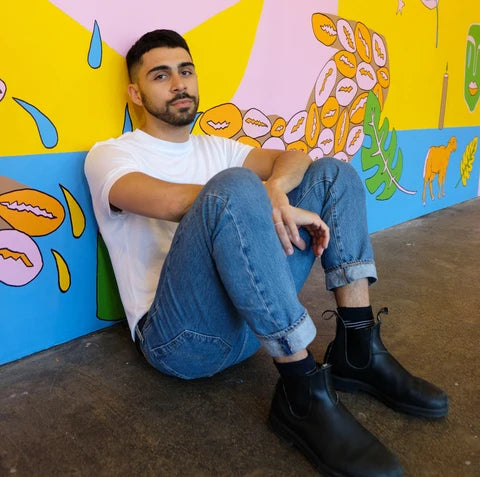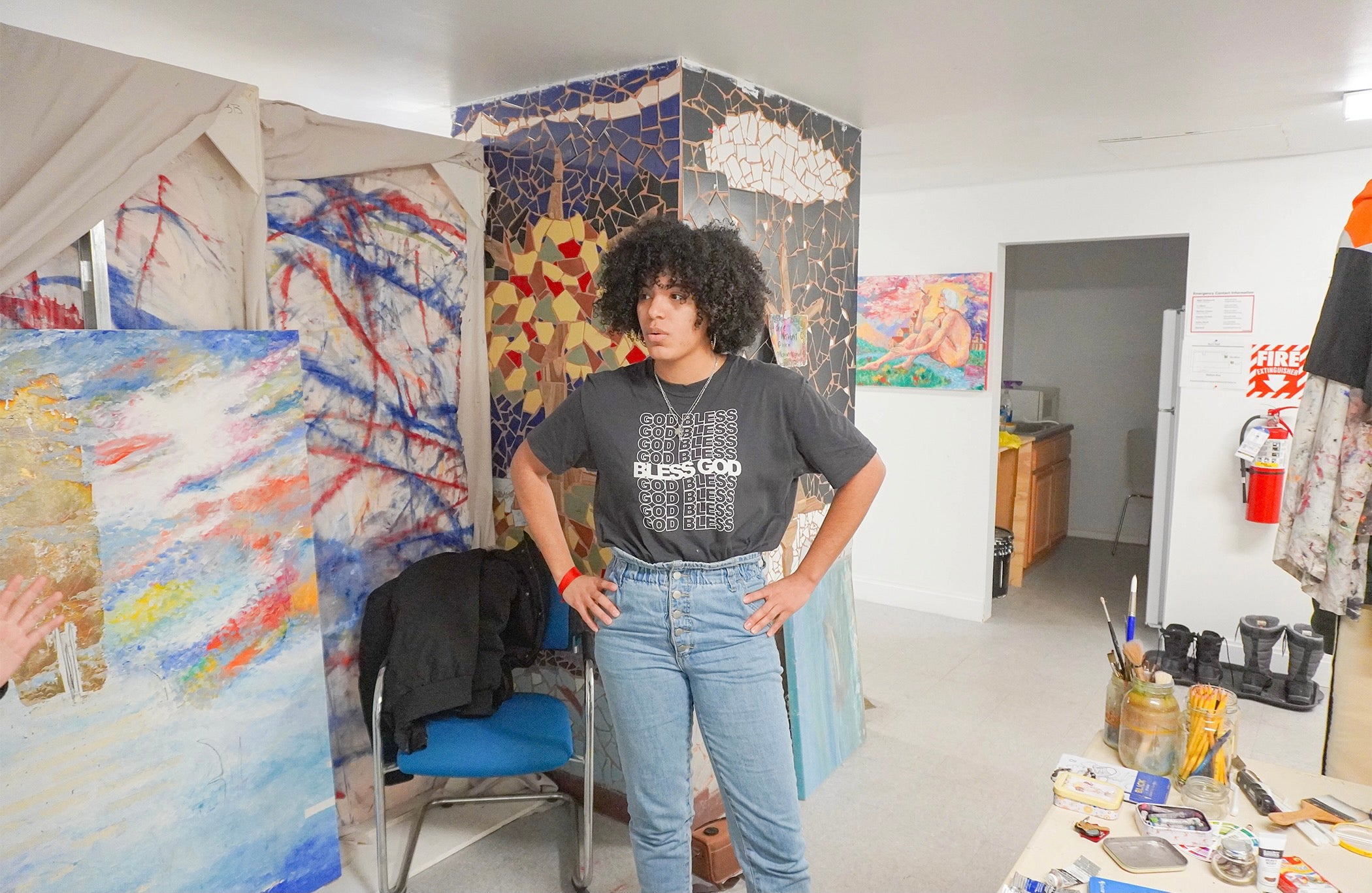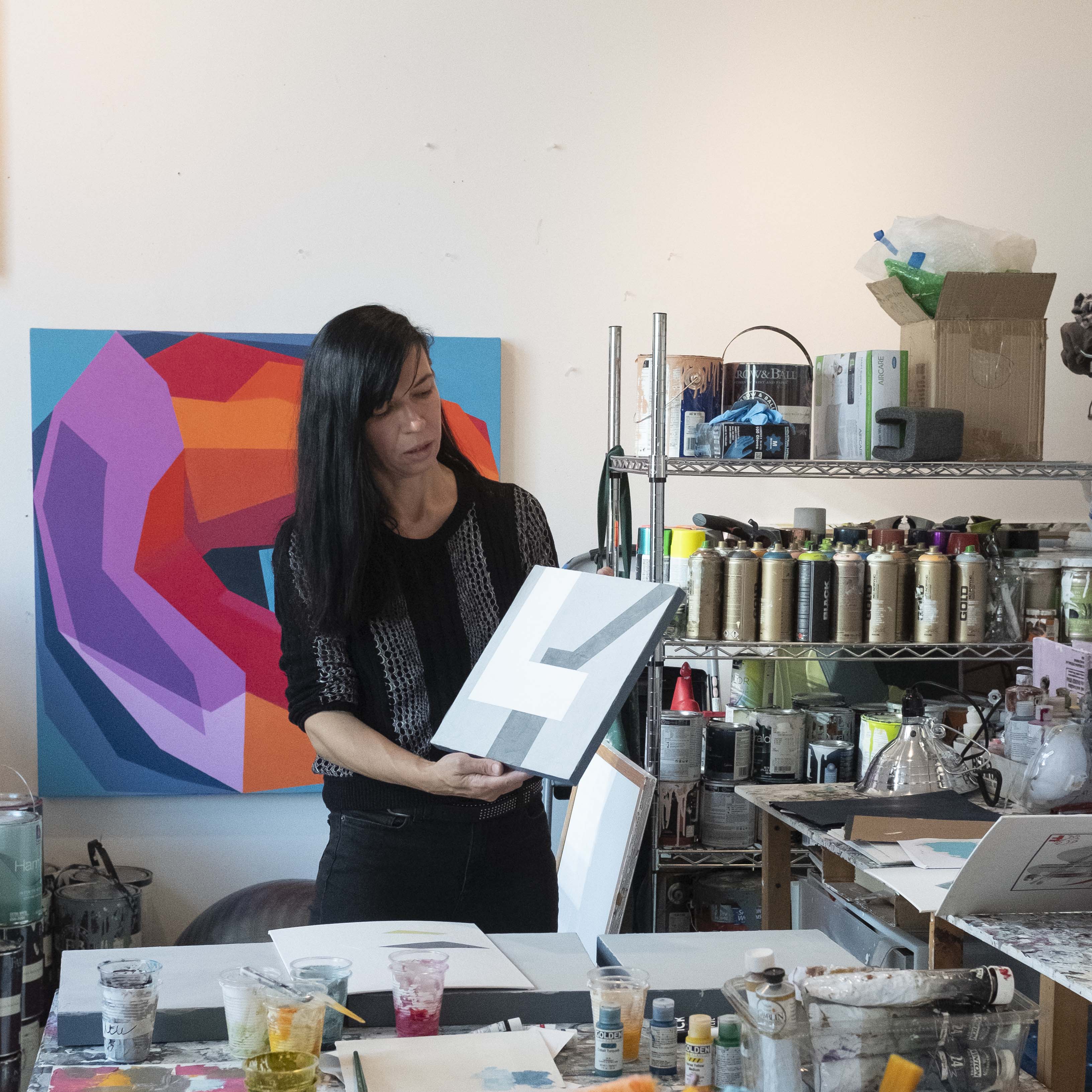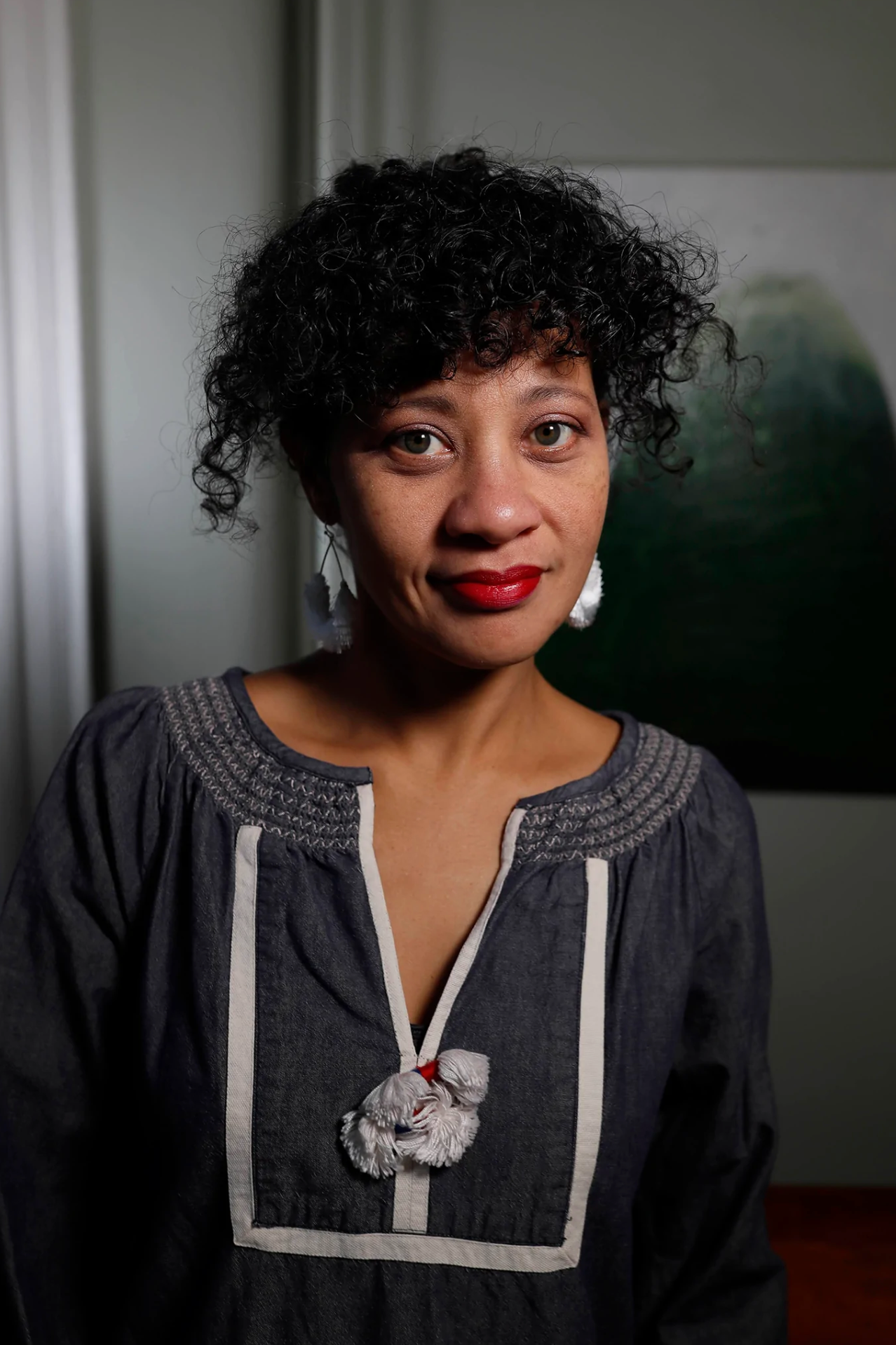No Products in the Cart
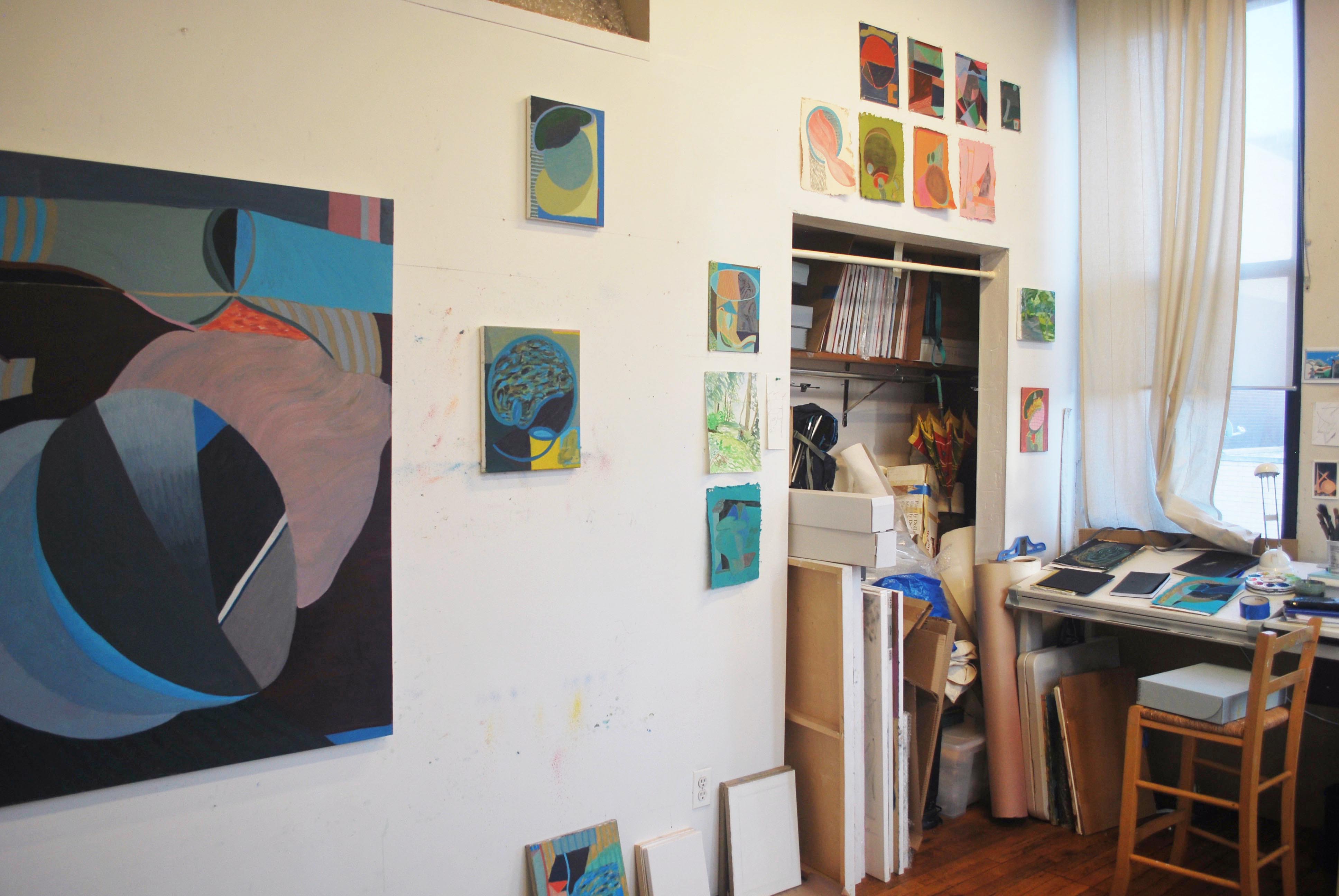
MEET LIZ

Curina’s first virtual interview brings us to universal and specific concerns about working from home. Artist Liz Ainslie’s explorations of fantasy and language are tucked into quarantine routines, movie and book recommendations, and missing human contact.
Quarantine Mood, Work and Otherwise

Q. Could you introduce yourself?
My name is Liz Ainslie. I make abstract paintings in oil and sometimes gouache and watercolor. I live in Brooklyn in Williamsburg.
Q. I guess the first thing we see there is the home studio behind you. I want to know if anything’s changed for you since you started spending a lot of time indoors.
My day is just different now. I have a day job and I’m lucky to have that, but it does sap a lot of energy looking at the screen continuously. So a studio is something I can think about when I’m in the next room, like “later I’ll be able to look at real objects!”

(Top left - right - bottom) Ocean Vuong's On Earth We're Briefly Gorgeous; Screaming Female's LP Ugly; and a scene from Squid and the Whale
Q. What are you reading/watching/listening to when you’re not working on painting?
LISTENING TO: Screaming Females.
I want to buy a bunch of records too, to support artists during this time! I’ve been into pretty energetic music.
WATCHING: Squid and the Whale
It’s a very real film about family’s emotional interactions. If you want something light that’s not it, but… (laughter) I was just watching the Bon Appetit youtube channel, too - the ones where they make their own gourmet pop-tarts. It’s almost like someone making art, it’s such a process.
READING: On Earth We’re Briefly Gorgeous by Ocean Vuong.
It’s a beautiful book, very poetic. A coming of age narrative about his experience growing up in an immigrant family and their struggles together.
Q. Have you done anything impulsive so far?
I’ve gotten a little obsessed with playing guitar. I hope my roommates are not annoyed with me constantly practicing.
A Peak into Fantasy Worlds

Q. You’ve always had a studio in your apartment. I want to know how it feels to live with your paintings.
Sometimes I come in here just to look at what I have up. Sometimes I say I need to take everything off the walls and just look at the paintings that will help me move forward to the next body of work. I’m constantly rethinking and rearranging the existing works.
Q. That point about rearranging things brings me to your paintings. In your past interviews you’ve compared them to language - especially in the sense that your titles are fragments of sentences.
I think my methodology for creating paintings comes as a parallel to my abstraction. My works are abstract but they have a connection to something in the real world and observation. I started listening to the radio, or overheard conversations on the subway or park and picking out little snippets of sentences where the meaning becomes ambiguous and takes on a double meaning.

Q. You’ve also described your works as kind of a fantasy world (ex. in the interview with Maake magazine). What kind of fantasy is it?
I think painting and drawing in general are like entering a fantastical world.
It’s a world I’m constantly building, shifting, and changing, drawing from different parts of my psyche: memories from childhood, associations with color. I love the idea of leaving room for discovery in each painting.
That’s how it becomes a journey, because I don’t quite know what I’m going to get. I have my techniques and knowledge of color theory - but each element is like a character that acts and reacts to things I throw at them.
Q. That’s why that is - I was wondering why your works almost feel like animated motion pictures.
It’s somewhat related to the physical energy I put in them.
I like to have a certain relationship to speed and the way I’m moving in my studio. Maybe I’m dancing to some music that day.

Q. And how did you arrive at your current style?
It grew out of different things I learned from school.
As an undergrad I made a lot of works connected to images of ornamentation and colors associated with femininity. When I was in grad school I stripped that away and began to ask: What if I don’t have themes to hold onto, what do I have? Things became more geometric, pared down a little.
Over the years, those two things started to meld. It’s neither of those things now. Around 2014, these themes started coalescing into the vocabulary I have now: incorporating organic forms, patterns influenced by landscape painters, or the idea of light and elements of landscape.
Q. Thinking now, there are segments in your paintings with wavy patterns in them.
They remind me of post-Impressionist Fauvist painting a little bit. It’s kind of funny, it’s like saying: “I’ll just take this little chunk and throw it in there, see what happens”. I enjoy the awkwardness of inserting something that is so un-wieldy, you know?
The challenge for me is to make everything work together after I throw that wrench into the painting.

Q. Everything in our lives are slowing down these days. Are your paintings affected by that?
That’s interesting. Probably not?
Those are two recent ones there (the small ones in the back). I think sometimes I have a reactionary response, I may get more frenetic when things are slow.
Q. How do you define productivity for a process as slow and unpredictable as painting?
I’ve learned to not feel bad about taking time away, instead just doing things that are productive for your general practice. Like I was saying, sometimes I would just come in and rearrange everything or clean the studio. It (being productive) seems to come in waves, too - you have times when you’re compelled to make more and more paintings. Other times you’re almost preparing for that time.
Then there’s also the fact that you still have to try to be measured.
You can be producing and producing without being too thoughtful. What’s hard especially in NYC, where everyone’s go-go-go, is the question of where do you find time to reflect on painting, on where all that is going. If you can integrate all of that and come to your own pace, that is part of productivity, really.
What Happens Now?

Q. You’ve exhibited a lot at independent galleries - I love TSA and SARDINE. Do you miss the physical space? How can we keep up the bond between artists and art workers without physical interaction?
I miss TSA, Sardine, Transmitter, so many artist-run spaces. But I will say the art community jumped right into doing things online and on Instagram. I’ve been part of two or three different artwork sales either going to benefit organizations, or to help artists who lost their jobs. So all that’s continuously happening.
I’m also one of the co-directors of Underdonk, a gallery in Bushwick. We were unfortunately affected by the bankruptcy of Paddle8. We ended up asking for donations so we can pay the artists back. We’re gonna do an artwork sale soon so we can keep the gallery running, really. I’m also already seeing a lot of small galleries planning to come together and form a coalition.

(Above) Underdonk in Bushwick. Photo credit: Artspiel
Q. What’s the first thing you’d want to do when quarantine is over?
On the one hand, I want to go hiking - I don’t have a car so I haven’t been able to do that. But on the other hand, I want to sit and eat dinner at the bar with a friend!
In terms of projects - we never had a closing for the Underdonk show that was up. I don’t know when it can happen though…
Q. I hope you can! Maybe there can be a cap on capacity or something.
We’ve been thinking of creative ideas for the future - what if only five people could come in at the same time and they have to have a discussion once they’re inside (laughter)
Photo credit: all studio photos from the artist, Liz Ainslie.



